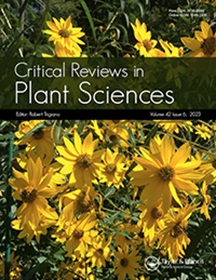提高作物耐盐性方法的演变
IF 6
2区 生物学
Q1 PLANT SCIENCES
引用次数: 17
摘要
摘要盐度胁迫的存在早在作物驯化之前就可以追溯到,但对这种威胁的记录和缓解才开始100年 几年前。由于缺乏合适的设备和先进的技术,早期对土壤和作物伤害的盐度评估是目测完成的。最初,科学家们的主要关注点是开垦和管理受盐影响的土壤,使其适合农业。后来,他们努力利用生长和形态特征以及一些基本的生理标准,最重要的是离子吸收和积累,来评估不同植物物种的耐盐程度。在20世纪初,开发耐盐作物作为土壤开垦的替代品的想法得以实现,并创造了“生物修复”或一般的“生物方法”等术语。这促使植物育种家启动了旨在培育耐盐作物品种的育种计划。尽管传统的选择和育种有几个局限性,主要是缓慢,但它已经产生了许多不同作物的耐盐品系和品种。为了加快作物育种计划,20世纪末引入了一种被称为“转基因方法”的基因工程方法。植物生物技术学家已经生产了大量不同作物的转基因系,但它们在开发耐盐品种方面的应用并不显著。此外,由于公认的健康风险和生物安全问题,许多国家禁止转基因作物。最近,为了精确编辑生物体的基因组,开发了新的分子工具。例如,CRISPR-Cas9正被用于精确编辑与非生物胁迫耐受有关的基因,包括耐盐性。它有望在培育耐多种胁迫(包括盐胁迫)的品种方面取得成功。本文章由计算机程序翻译,如有差异,请以英文原文为准。
Evolution of Approaches to Increase the Salt Tolerance of Crops
Abstract The existence of salinity stress can be traced well before the domestication of crops, but the documentation and mitigation of this menace started only 100 years ago. Due to the unavailability of appropriate equipment and lack of sophisticated techniques, the salinity appraisal of soils and crop injury at early times was done visually. Initially, the major focus of scientists was on reclamation and management of salt-affected soils to render them fit for agriculture. Later, they strived to assess the degree of salt tolerance of different plant species using growth and morphological traits as well as some fundamental physiological criteria, most importantly ion uptake, and accumulation. In the early 20th century, the idea of developing salt tolerant crops, as an alternative to soil reclamation was realized, and the terms “biological fix” or in general “biological approach” were coined. This triggered plant breeders to initiate breeding programs aimed at developing salt tolerant crop cultivars. Although conventional selection and breeding has several limitations, mainly its slowness, it has yielded many salt tolerant lines and cultivars of different crops. To speed up the crop breeding programs, a genetic engineering approach referred to as “transgenic approach” was introduced during the late 20th century. Plant biotechnologists have produced large numbers of transgenic lines of different crops however their use in developing salt tolerant cultivars is not remarkable. Furthermore, genetically modified (GM) crops are prohibited in many countries because of putative health risks and biosafety concerns. More recently, for precise editing of genomes of organisms, new molecular tools have been developed. For example, CRISPR-Cas9 is being used to precisely edit genes involved in abiotic stress tolerance, including salt tolerance. Its success in terms of developing cultivars tolerant to multiple stresses including salt stress is expected.
求助全文
通过发布文献求助,成功后即可免费获取论文全文。
去求助
来源期刊
CiteScore
12.90
自引率
1.40%
发文量
15
审稿时长
>12 weeks
期刊介绍:
Critical Reviews in Plant Sciences focuses on presenting in-depth and up-to-date reviews of timely and/or cutting-edge subjects in the broad discipline of plant science, ranging from molecular biology/biochemistry through the areas of cell biology, plant pathology and physiology, genetics, classical botany, and ecology, to practical agricultural applications. Articles in the journal provide an up-to-date literature base for researchers and students, pointing the way towards future research needs. The journal is also a significant source of credible, objective information to aid decision makers at all levels.

 求助内容:
求助内容: 应助结果提醒方式:
应助结果提醒方式:


